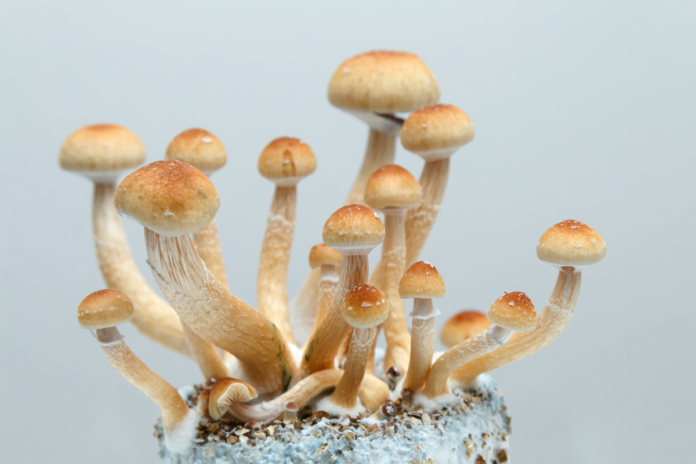Science lovers, listen up!
If you are a scientist considering taking up a new hobby, you’ve come to the right place. Mushroom cultivation is hot right now. It is a sustainable practice that offers immense health benefits when complete – boosts the immune system, reduces inflammation, and provides essential nutrients like Vitamin D.
Mushroom growing is a rewarding hobby that can also become a profitable venture. Setting up your mushroom growing space properly is crucial for success. In this guide, we’ll walk you through the steps to create an ideal environment for your mushrooms. Let’s get started.
Choosing the Right Location
The first step is selecting the right spot for your mushroom cultivation. You need to decide whether you want to grow your mushrooms indoors or outdoors. Indoor growing allows you to control temperature, humidity, and light more effectively. It is suitable for year-round cultivation. You can use a spare room, basement, or garage for this purpose.
On the other hand, outdoor growing is more suited for seasonal cultivation and requires less control over environmental factors. Shaded garden areas or logs in your backyard can serve as good outdoor growing spots.
Ensure that you have enough room for your growing containers or shelves. The space should be clean and easy to maintain. Cleanliness is crucial to prevent contamination, which can ruin your mushroom crop.
Controlling Temperature and Humidity
Mushrooms need specific conditions to grow well. They thrive in temperatures between 55°F and 75°F. If you are growing mushrooms indoors, you may need to use heaters or air conditioners to maintain a stable temperature. Consistent temperature control is vital for healthy mushroom growth.
Humidity is another critical factor. Mushrooms prefer high humidity levels, usually around 80 to 90%. A humidifier can help maintain the required humidity levels if you are growing indoors. You can also mist the growing area regularly to keep it moist. Outdoor growers may need to rely on natural humidity levels and supplement with regular misting during dry periods.
Ensuring Proper Ventilation
Good airflow is necessary to prevent mold and other contaminants from affecting your mushrooms. Poor ventilation can lead to stagnant air, which encourages the growth of unwanted molds and bacteria. Use fans to circulate air in your growing area. If you are growing indoors, installing vents or windows can help with fresh air exchange. However, be careful not to place fans directly on the mushrooms, as this can dry them out.
Lighting Conditions
Mushrooms need light, but not too much. Indirect light is ideal for most mushroom species. If you are growing indoors, place your setup where it can receive indirect sunlight or use artificial lights like fluorescent or LED bulbs. Keep the lights on for about 12 hours a day to mimic natural light cycles.
Maintaining Cleanliness
Keeping your growing space clean is vital to avoid contamination. Regularly clean the area with a mild disinfectant. Always wash your hands and use clean tools when handling your mushrooms. Contaminants can easily ruin your crop, so maintaining a clean environment is essential.
Using an Isolate Spore Syringe
To start growing mushrooms, you need mushroom spores. An isolate spore syringe is an excellent tool for this purpose.
What is a isolated spore syringe?
An isolate spore syringe contains a solution with mushroom spores. The term “isolate” means that the spores are from a strain of mushroom selected for desirable traits like size and growth rate. This makes them more reliable for cultivation.
Why Use It?
Using an isolate spore syringe ensures consistency in the mushrooms you grow. The mushrooms will have predictable characteristics, which is important for both personal use and commercial production. It’s also easy to use. You simply inject the spores into your prepared growing medium. This method has a higher success rate compared to using wild spores.
Inoculating Your Growing Medium
It’s time to inoculate once your growing space and mushroom fruiting chamber are ready. Start by sterilizing your tools and washing your hands. Use the isolate spore syringe to inject the spores into your growing medium, making sure to distribute them evenly. After inoculation, cover the medium with a clean plastic bag or lid to maintain humidity.
Monitoring and Maintenance
Regular monitoring and maintenance are key to successful mushroom cultivation. Check your setup daily for signs of growth or contamination. Adjust temperature, humidity, and ventilation as needed. Continue to clean and sanitize your growing space to prevent any issues.
Harvesting Your Mushrooms
When your mushrooms are fully grown, it’s time to harvest. Harvesting at the right time is crucial. You should pick them when the caps are fully opened before they release spores. Use a clean knife to cut the mushrooms at the base. Proper handling and storage are important to maintain freshness.










